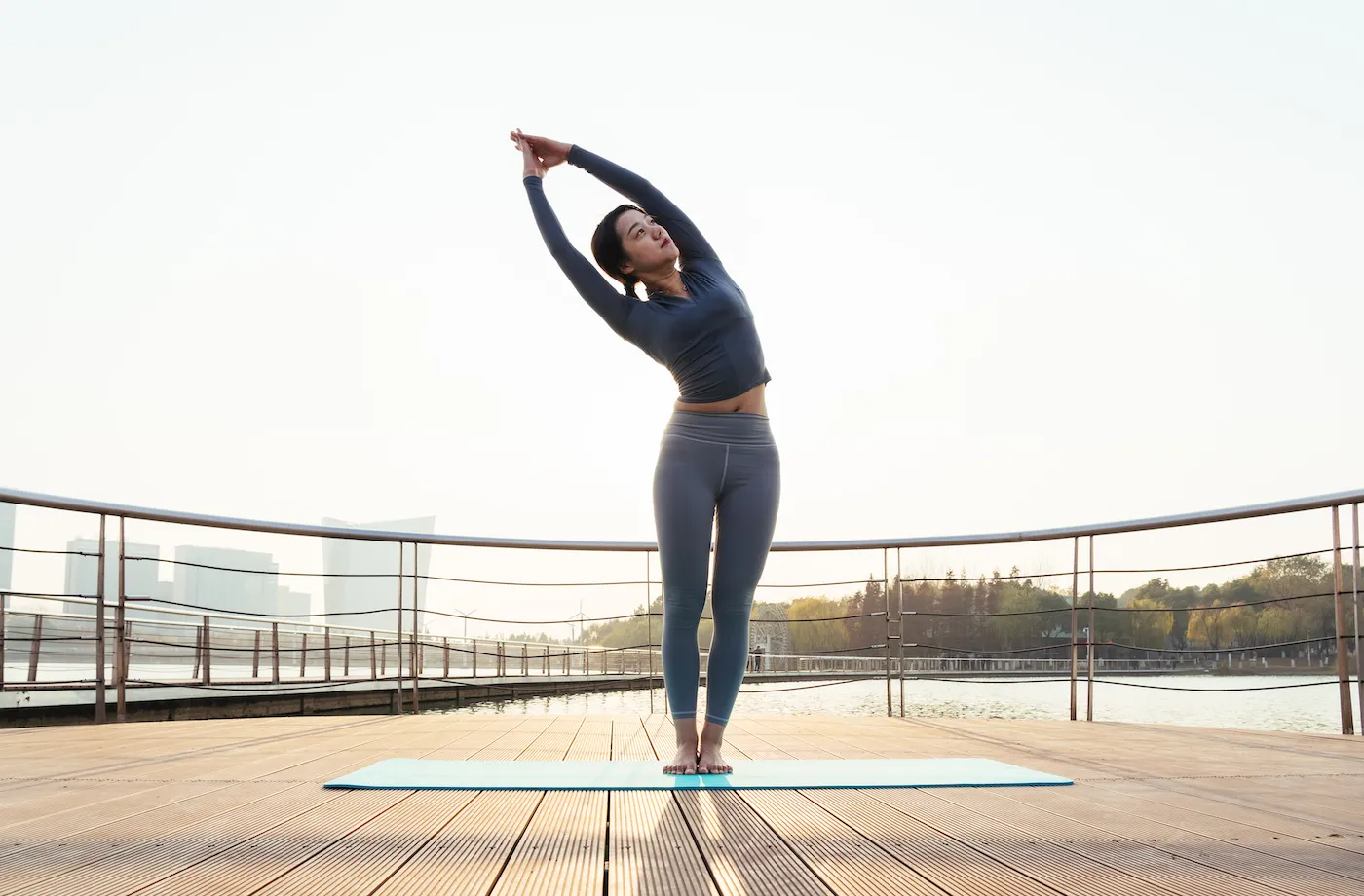Are you feeling tightness in your legs after a long day at work, or perhaps from an intense workout session? You’re not alone. Many people struggle with leg stiffness and limited mobility due to various factors like prolonged sitting, lack of stretching, or even just the natural aging process. Fortunately, incorporating simple leg stretches into your daily routine can significantly improve flexibility and overall well-being.
Imagine being able to bend down effortlessly to tie your shoes or squat comfortably while gardening—sounds great, right? Not only does regular stretching help alleviate discomfort, but it also enhances performance in physical activities and reduces the risk of injuries. Whether you’re at home, in the office, or on-the-go, there are easy leg stretches you can do anywhere that will make a real difference.
Let’s dive into some effective stretching exercises that can transform how you feel and move throughout your day!
Common areas of tightness in the legs and their effects
Many individuals experience tightness in specific areas of the legs, which can stem from various activities or lifestyle choices. The hamstrings are often a common culprit; this group of muscles runs along the back of your thighs and can become stiff from prolonged sitting or heavy lifting.
The quadriceps, located at the front of your thighs, also tend to tighten up, especially if you engage in running or cycling without proper stretching. Tight quads can lead to discomfort during movement and even knee pain over time.
Calf muscles frequently accumulate tension too. If you’re someone who spends hours on your feet or wears high heels regularly, you might notice that these muscles become restrictive.
Additionally, hip flexors can contribute significantly to leg tightness. These muscles connect your pelvis to your spine and when they’re shortened from extended sitting periods, they pull on other muscle groups creating imbalances throughout the legs.
Benefits of incorporating leg stretches into daily routine
Incorporating leg stretches into your daily routine offers a multitude of benefits that can enhance both physical and mental well-being. Regular stretching improves flexibility, which allows for greater mobility in everyday activities. You’ll find it easier to reach for items on high shelves or bend down to tie your shoes.
Stretching also promotes blood circulation throughout the legs. Improved circulation helps deliver oxygen and nutrients to muscles, aiding recovery after exercise or prolonged sitting.
Additionally, regular leg stretches can alleviate tension and stiffness caused by stress or long hours at a desk. This simple practice not only relaxes tight muscles but also contributes to improved posture.
Moreover, dedicating just a few minutes each day fosters mindfulness and body awareness. It’s an excellent way to reconnect with yourself amidst life’s hustle and bustle.
5 Leg Stretches You Can Do Anywhere:
Standing Forward Fold is a simple yet effective stretch. Stand tall, then hinge at your hips, letting your upper body lean down toward the ground. Feel that gentle release in your hamstrings and lower back.
Next up is the Seated Single Leg Stretch. Sit on the floor with one leg extended straight out and the other bent in. Reach towards your toes on the extended leg while keeping your spine long. This targets both legs effectively.
Lizard Pose adds a bit of depth to your routine. From downward dog, step one foot forward outside of your hand. Allow gravity to gently pull you deeper into this hip-opening stretch.
Pigeon Pose is fantastic for releasing tension in tight hips. Bring one knee forward and extend the opposite leg behind you while lowering into it gracefully.
These stretches require no equipment and can be done anywhere, making them perfect for improving flexibility throughout your day!
– Standing Forward Fold
The Standing Forward Fold is a fantastic stretch that targets the hamstrings, calves, and lower back. It’s simple enough to do anywhere—whether you’re at home or in the office.
To perform this stretch, stand with your feet hip-width apart. Inhale deeply as you reach your arms overhead. Exhale slowly while bending forward from your hips. Allow your upper body to hang heavy towards the ground.
Feel free to keep a slight bend in your knees if necessary. This will help protect your lower back while still gaining the benefits of flexibility.
You can also try holding onto opposite elbows for an even deeper release through the spine and legs. Breathe deeply as you hold this position; each exhale allows for more relaxation and lengthening of those tight muscles.
Remember, it’s all about listening to your body and moving within a comfortable range!
– Seated Single Leg Stretch
The Seated Single Leg Stretch is a fantastic way to target tight hamstrings and improve leg mobility. It requires minimal space, making it an ideal stretch you can do anywhere.
To perform this stretch, sit on the floor with one leg extended and the other bent. Reach for your toes while keeping your back straight. Feel the gentle pull in your hamstring as you breathe deeply.
If you’re unable to reach your toes initially, don’t worry! You can use a strap or towel around your foot for assistance. This modification allows you to maintain proper form without straining yourself.
Hold the position for 15-30 seconds before switching legs. The more consistently you practice this easy leg stretch, the greater flexibility you’ll achieve over time. Incorporate it into your flexibility routine after workouts or during breaks in your daily activities.
– Lizard Pose
Lizard Pose is a powerful stretch that opens up the hips and groin while also enhancing leg flexibility. It’s perfect for those times you need to release tension from long hours of sitting.
To practice Lizard Pose, start in a low lunge position with your right foot forward. Lower your left knee to the ground and gradually shift your weight forward, placing both hands on the inside of your right foot.
Feel free to adjust by keeping your back knee on the mat or lifting it off for a deeper stretch. Breathing deeply helps deepen this pose, allowing you to melt into it.
If you’re looking for an easier option, try resting your forearms on the ground or using yoga blocks under your hands for added support. This modification can help maintain alignment without straining too much.
– Pigeon Pose
Pigeon Pose is a favorite among yoga enthusiasts for good reason. It targets the hips and stretches the glutes, making it an excellent choice for those seeking to improve flexibility.
To enter Pigeon Pose, start in a tabletop position on your mat. Bring your right knee forward toward your right wrist while extending your left leg straight back behind you. This creates a deep opening in the hip.
Ensure that both hips are squared towards the ground. If you’re feeling tightness or discomfort, don’t hesitate to use a cushion under your hip for support.
Breathe deeply as you hold this pose; each exhale can help release tension stored in the muscles. Switch sides after holding for several breaths to maintain balance throughout the body.
Pigeon Pose not only enhances mobility but also promotes relaxation and grounding during practice.
Tips for proper form and modifications
Maintaining proper form during leg stretches is essential for maximizing benefits and minimizing injury risk. Always listen to your body. If a stretch feels too intense, ease back slightly.
Engaging your core can help stabilize your body, allowing for better alignment in each pose. It’s about balance between effort and relaxation.
For those with tightness or limited mobility, using props such as cushions or yoga blocks can provide extra support and make stretches more accessible.
Experiment with variations of each stretch to find what suits you best. For example, if standing forward fold feels challenging, bend your knees slightly to relieve tension in the lower back.
Remember that breathing plays a crucial role in stretching effectively. Inhale deeply before entering a stretch and exhale as you deepen into it—this encourages flexibility while promoting relaxation throughout the entire process.
Additional ways to improve leg flexibility
Improving leg flexibility doesn’t have to be complicated. There are several additional strategies you can integrate into your daily routine.
Hydration plays a crucial role in maintaining muscle elasticity. Drinking plenty of water helps keep your muscles hydrated and flexible, which is essential for effective stretching.
Warm up before diving into any stretching exercises. A few minutes of light cardio, like brisk walking or jogging in place, gets the blood flowing and prepares your muscles for deeper stretches.
Incorporating foam rolling can also enhance flexibility. This technique releases tension in tight areas by breaking down knots and improving circulation.
Try gentle yoga or Pilates classes that focus on mobility and stretching. These practices not only increase flexibility but also promote overall body awareness.
Consider setting reminders throughout the day to take short breaks for movement or stretching. Even quick five-minute sessions can make a significant difference over time.
Listen to your body as you stretch. Respect its limits while gradually working toward greater ranges of motion without forcing anything. Maintaining consistency with these practices will lead you closer to improved leg mobility and overall flexibility over time.






